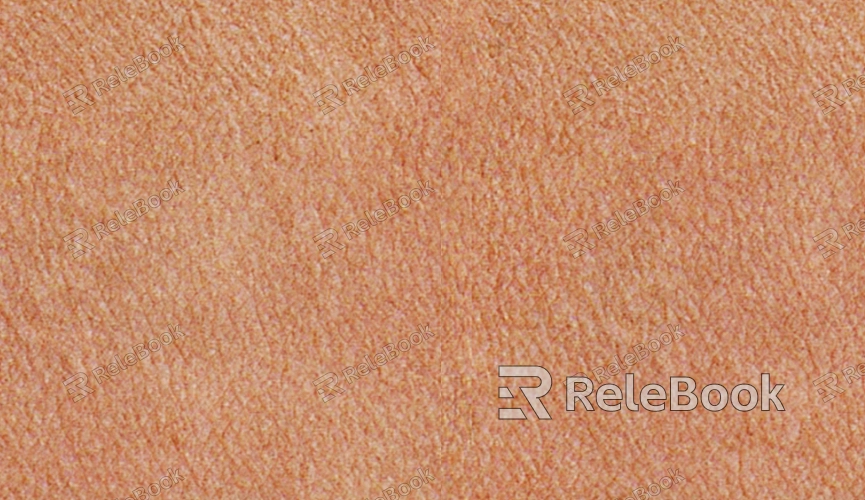How to Create Orange Skin Texture 3D
Orange skin textures are widely used in 3D modeling to add realistic details, whether for virtual characters, animals, or even fruits. Due to their unique surface features like fine texture and bumps, orange skin textures play a significant role in industries like game design, animation, and product visualization. Popular 3D software such as Blender, 3ds Max, Maya, and Substance Painter are commonly used for creating these textures. In this article, we will guide you through the process of creating a realistic 3D orange skin texture, improving your project’s detail and realism.

1. Choosing the Right Texture Base
The first step in creating an orange skin texture is to select an appropriate texture base that closely resembles the natural appearance of skin. Here are the main types of textures to consider:
Diffuse/Albedo Texture: This is the foundation of the orange skin texture, determining the basic color and details. Orange skin typically includes a variety of hues such as orange, yellow, with slight reds or browns.
Normal Map: This texture simulates surface details and enhances the lighting reflection on the skin, making it look more three-dimensional and lifelike.
Roughness Map: Controls the smoothness of the skin's surface, simulating areas of rougher skin texture, adding to the natural look of the material.
Displacement Map: Used to adjust the actual shape of the skin's surface, enhancing the orange peel effect and adding depth to the details.
Choosing the right texture base is crucial as it directly impacts the precision and realism of the final render.
If you find sourcing high-quality 3D textures too complicated or time-consuming, consider visiting Relebook. You can easily download premium textures from https://textures.relebook.com/.
2. Creating Orange Skin Texture in Substance Painter
Substance Painter is a professional tool used for creating high-quality 3D textures. Here’s a step-by-step guide to creating an orange skin texture in Substance Painter:
Import Your Model: Begin by importing your 3D character model into Substance Painter. Make sure the model has already undergone UV unwrapping, as textures will not map correctly without it.
Select a Skin Material Template: Choose a basic skin material template in Substance Painter to start with. This template will help you quickly set up the foundational properties of the skin.
Paint Details: Use Substance Painter’s painting tools to apply the orange skin details. You can use the brush tool to paint color variations and small texture bumps, giving the skin a more lifelike appearance.
Adjust Normal and Roughness Maps: To simulate the skin’s true texture, adjust the normal and roughness maps. This will help create subtle bumps and smooth areas, making the orange skin texture more dynamic.
With Substance Painter, you can efficiently create a highly detailed and realistic orange skin texture, perfect for 3D rendering and animation projects.
3. UV Unwrapping and Texture Mapping
Before creating your orange skin texture, it is essential to ensure the model’s UVs are correctly unwrapped. UV mapping determines how textures will be applied to the 3D model. To avoid stretching or misplacement, follow these tips:
Plan UV Layouts: Make sure the model’s parts are well-distributed in the UV space, avoiding compression or stretching of the texture on critical areas.
Check Texture Unwrapping: Use the UV editor in your 3D software to verify the texture’s layout. For complex surfaces like skin, make sure each region’s UV is not misaligned or stretched.
Proper UV unwrapping ensures the orange skin texture is applied accurately and realistically.

4. Adding Fine Details and Refinements
The finer details of the orange skin texture are key to achieving a realistic effect. Here are some tips to enhance your texture:
Small Wrinkles and Pores: You can add small wrinkles, pores, or other skin features through normal maps or displacement maps. These details make the skin appear more natural and lifelike.
Color Gradients: Orange skin often features a gradient from a deeper orange to lighter hues like yellow or red. Use color gradients to simulate natural skin transitions.
Imperfections: To make the orange skin more authentic, you can add subtle imperfections like blemishes or small spots. These imperfections add personality and realism to the model.
These finer details give your texture more depth and help it look more like real skin.
5. Fine-Tuning Render Settings
After creating the texture, it’s time to adjust the render settings to ensure the orange skin looks as realistic as possible. Key render settings include:
Lighting Setup: The angle and intensity of light sources directly affect how the skin reflects light. Make sure to adjust the lighting to fully showcase the details of the orange skin.
Material Adjustments: Prior to rendering, fine-tune the material settings, including reflectivity, roughness, and specular values, to ensure the surface details appear accurately.
Render Tests: Perform test renders to check how the texture performs under various lighting and angles. Ensure that no unnatural seams or imperfections appear.
Proper render settings are essential for showcasing the orange skin texture at its best and achieving a polished final result.
6. Accessing High-Quality Orange Skin Textures
If you’re looking to save time and access high-quality orange skin textures, consider visiting Relebook. Whether you need a realistic orange skin texture or other texture types, Relebook offers a wide range of options. Enhance your project with premium textures by checking out Relebook’s texture library.
By following the steps outlined in this article, you should now have a clear understanding of how to create 3D orange skin textures. Whether you are using Substance Painter for detail painting or optimizing render settings, every step plays a crucial role in achieving the desired result. Happy texturing!

